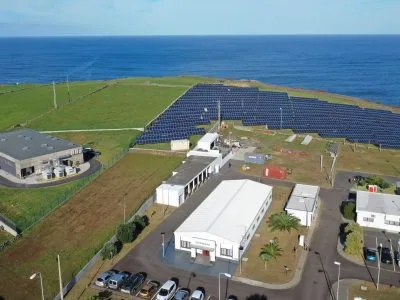What will have the greatest effect on the future cost of energy storage?
The energy storage market is growing exponentially, however, as a percentage of total grid capacity it still only makes up a tiny fraction of the whole. Even among energy storage applications, pumped hydropower still retains a 95% market share. The major factor inhibiting further uptake — cost.
One factor emerging as a clear driver of cost reductions is economy of scale. As demand for energy storage increases, mass production becomes feasible. Take Tesla’s Gigafactories: with a planned annual battery production capacity of 35 GWh — close to the current level of battery production of the entire world.

Source: Electrek
Tesla’s ambitious factory plans may be getting the most press, but they’re far from the only game in town. Accumotive (Germany), Energy Absolute (Thailand) and a consortium including Boston Energy and Innovation (BEI), Charge CCCV, C&D Assembly, Primet Precision Materials and Magnis Resources (USA) all have large-scale manufacturing plants in the pipeline.
These new large factories will allow energy storage to benefit from spreading the hefty upfront costs over the number of units produced. Tesla also expects that implementing innovative manufacturing processes will further drive cost reduction.
Lithium-ion based technologies account for close to 95% of new deployments of energy storage. They will undoubtedly see the most reductions in cost in the near future, however, production growth will still have to contend with the scarce quantities and precarious supply chains of the required raw materials.
The supply chain concerns for lithium-ion batteries is a main driver of research into new battery technologies — cost reduction is another. While redox flow batteries are not a new technology, this area of energy storage is seeing continuous development of new battery chemistries.
Some of these chemistries are already being tested and manufactured commercially, while others are only just being proven in university laboratories. In almost every case, the focus is on making effective batteries with common, cost-effective and safe raw materials.
Flow batteries have two areas where costs could be significantly reduced — the electrolyte itself and the physical components of the cell. A safer, less corrosive electrolyte allows the cell to be built from cheaper, less resistant components. Cost reductions of these types could make flow batteries a much more attractive prospect for grid energy storage.
Until these new chemistries are further developed, however, these cost reductions are likely to be a drop in the bucket compared to those from manufacturing process improvements for commercially proven energy storage technologies. Another factor that could prove beneficial for cost reduction is increasing regulatory support for energy storage technologies, such as is being seen in California.
Finally, the greatest cause of future cost reduction could be the continuous cycle of increasing demand driving more production driving lower costs driving increasing demand. The exponential growth in energy storage that is being seen right now is due to a number of overlapping business sectors — renewables, power generators, grid operators, etc — finding energy storage increasingly economically attractive.
As it stands, the cost reduction forecasts in the energy storage market are very optimistic. One report from World Energy Council for sustainable energy predicts a 70% decrease in energy storage costs by 2030. The more conservative Lazard’s Levelized Cost of Storage also predicts that energy storage costs will ‘decrease significantly over the next five years’.
70% Decrease In Energy Storage Costs By 2030, Says Report
E-storage: Shifting from cost to value Wind and solar applications (PDF)
Energy storage costs to ‘decrease significantly’ over next five years – Lazard
Lazard’s Levelized Cost of Storage – Version 2.0 (PDF)
The new economics of energy storage
Energy Storage Market Outlook 2017: State of Play
10 Battery Gigafactories Are Now in the Works. And Elon Musk May Add 4 More
Tesla Gigafactory
If you want to know more about this and other topics directly from end users of energy storage technologies join us at one of these annual events: The Energy Storage World Forum (Grid Scale Applications), or The Residential Energy Storage Forum, or one of our Training Courses.




